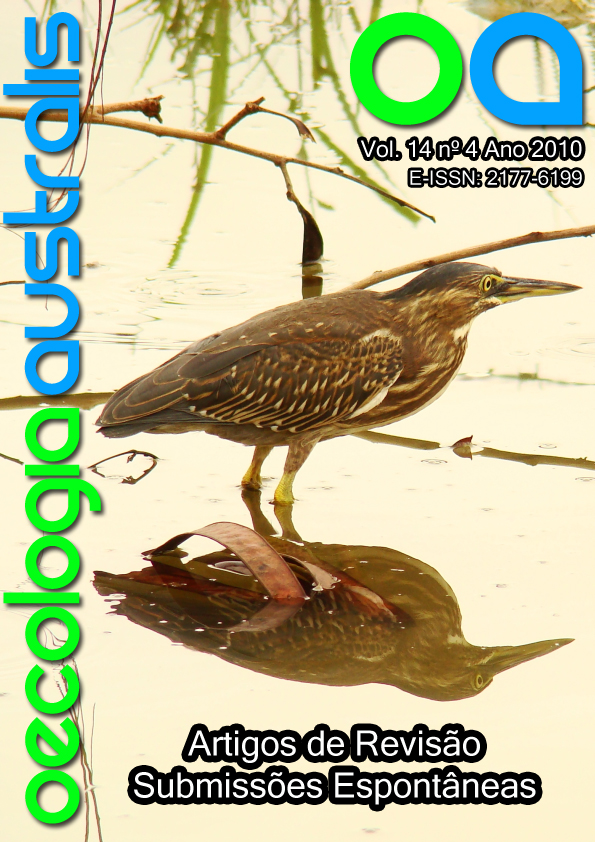DESLOCAMENTO NA MATRIZ PARA ESPÉCIES DA MATA ATLÂNTICA E A DIFICULDADE DA CONSTRUÇÃO DE PERFIS ECOLÓGICOS
Keywords:
cienciometria, deslocamento na matriz, Ecologia de Paisagens, Mata Atlântica, perfis ecológicosAbstract
INTER-HABITAT MOVIMENT FOR ATLANTIC FOREST SPECIES AND THE DIFICULTYTO BUILD ECOPROFILES. Few studies have evaluated the animals' capacity of inter-patch movement,
which contributed to the buildup over the years of approaches that use a target species to represent and protect the local biodiversity. Recently, the ‘ecoprofiles' approach, seeks to fill some gaps left by other approaches.
The ecoprofiles taking into account three main characteristics (type of ecosystem, area requirements and
capacity of inter-patch movement) of target species, which may serve as representatives of a range of species
that do not possess such information and demanding ‘similar' ecological requirements. Here, we performed
a scientometric study on the subject of inter-patch movement, focusing on Atlantic Forest species. We also
evaluated the possible use of ecoprofiles approach for this biome. In a general view, Brazil contributed with
0.005% to the total of published articles worldwide on the subject, which permit to conclude that the Brazilian
contribution on the subject is still recent and restricted. Focusing in the Atlantic Forest biome, we found
24 papers published until January 2010, 15 of which presented explicit results on inter-patch movement for
Atlantic Forest species. Among these 15 papers, the most common objective was to evaluate the species'
dispersal capacity (the capacity to cross the matrix from one remnant forest to another). The non-volant
mammals were the most frequent group in the articles and the birds showed the highest number of species
studied. Only birds and small mammals were studied, probably because they are easily found and captured in
remnant forests. This fact resulted in low values of inter-patch movement found for Atlantic Forest species.
Moreover, this contribution presents a strong regional bias, since the state of Rio de Janeiro contributed all
information about the subject for non-volant mammals and São Paulo for birds. Considering all the studies
analyzed, although several aspects of the issue have been addressed, it is clear that knowledge about the ability
to shift in the matrix is still very restricted. This fact, coupled with the lack of information on area requirements
of the species, makes it virtually impossible to apply the ecoprofiles approach for the Atlantic Forest, at least
in the short term.
Keywords: Functional connectivity; gap crossing; perceptual range; Landscape Ecology; scientometrics.
Downloads
Download data is not yet available.
Downloads
Additional Files
Published
2010-12-31
Issue
Section
Articles


